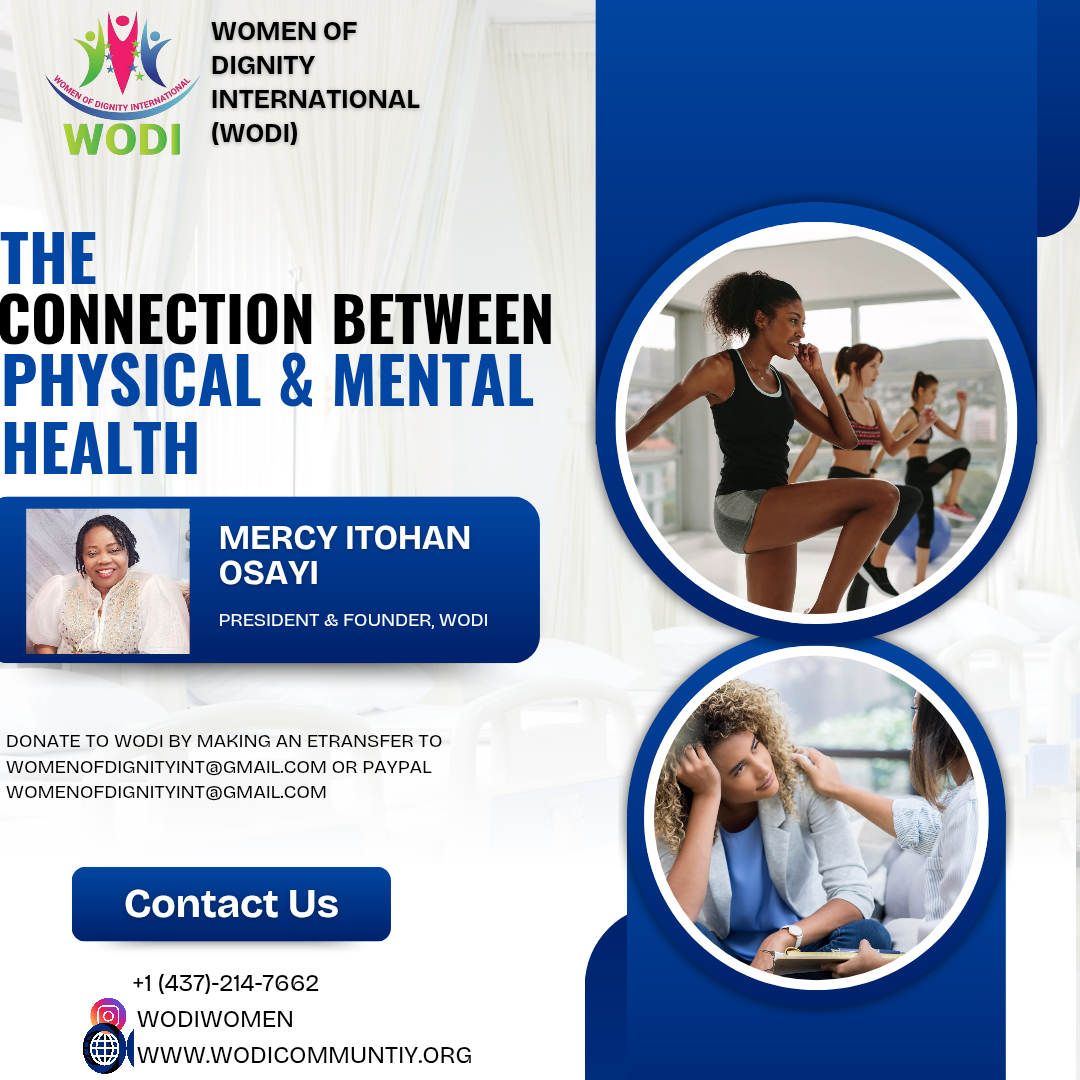The Connection between physical and mental health

The Connection between physical and mental health
The connection between physical and mental health is often overlooked. Many of us tend to categorize our well-being, focusing on physical fitness through exercise and nutrition while neglecting the equally important aspect of mental health. However, research continues to show that these two dimensions of health are deeply intertwined, influencing and shaping one another in profound ways.
The Physical-Mental Health Link
At its core, the relationship between physical and mental health is reciprocal. When we engage in regular physical activity, our bodies release endorphins—often referred to as "feel-good" hormones—that can significantly enhance our mood and reduce feelings of anxiety and depression. Exercise has been shown to be as effective as medication for some individuals dealing with mild to moderate depression. It can boost self-esteem, improve sleep quality, and provide a sense of accomplishment, all of which contribute to better mental health. In reverse, poor mental health can lead to physical health issues. Stress, anxiety, and depression can manifest in various physical symptoms, such as headaches, gastrointestinal problems, and a weakened immune system. Individuals struggling with mental health conditions may also find it challenging to maintain a healthy lifestyle, leading to sedentary behavior, poor dietary choices, and neglect of preventive healthcare.
The Role of Nutrition
Nutrition plays a crucial role in this intricate relationship. A balanced diet rich in fruits, vegetables, whole grains, and lean proteins not only fuels our bodies but also supports brain function. Certain nutrients, like omega-3 fatty acids found in fish and antioxidants from berries, have been linked to improved mood and cognitive function. On the flip side, diets high in processed foods and sugars can negatively impact mental clarity and emotional stability.
Mindfulness and Movement
In recent years, the rise of mindfulness practices has highlighted another layer of the connection between physical and mental health. Activities such as yoga and tai chi combine physical movement with mindfulness techniques, promoting relaxation and reducing stress. These practices not only improve flexibility and strength but also foster a greater awareness of the mind-body connection, helping individuals cultivate a sense of peace and balance.
Creating a Holistic Approach
To truly embrace the connection between physical and mental health, it is essential to adopt a holistic approach to well-being. This means recognizing that caring for our bodies goes hand-in-hand with nurturing our minds. Here are some practical steps to achieve this balance:
1. Regular Exercise: Aim for at least 150 minutes of moderate aerobic activity each week. Find activities you enjoy—whether it's dancing, hiking, or swimming—to make it sustainable.
2. Balanced Nutrition: Focus on whole foods that nourish both body and mind. Consider incorporating foods known for their mood-boosting properties.
3. Mindfulness Practices: Set aside time for mindfulness or meditation each day. Even a few minutes can help center your thoughts and reduce stress.
4. Social Connections: Foster relationships with friends and family. Social support is vital for mental well-being and can encourage healthier lifestyle choices.
5. Seek Professional Help: If you're struggling with mental health issues, don’t hesitate to reach out to a professional. Therapy and counseling can provide valuable tools for managing stress and anxiety.
Conclusion
Understanding the connection between physical and mental health is essential for achieving overall well-being. By recognizing how our physical state influences our mental health—and vice versa—we can take proactive steps towards a healthier, more fulfilling life. Embracing this holistic perspective allows us to cultivate resilience, enhance our quality of life, and ultimately thrive in both body and mind. After all, true wellness is not just the absence of illness but the presence of vitality in every aspect of our lives.
